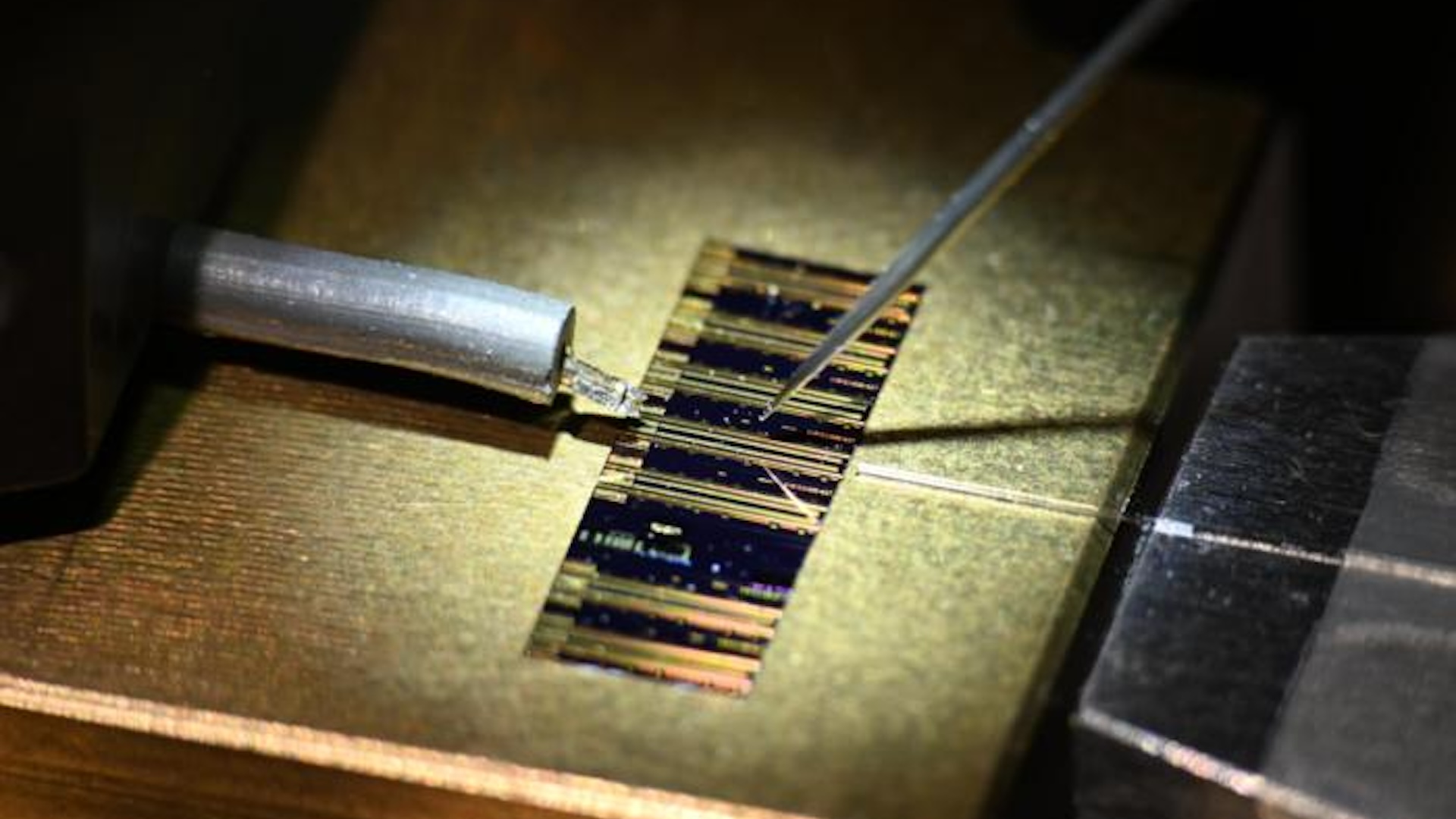
Scientists have developed a new kind of laser-based artificial neuron that mimics a biological nerve cell. This artificial neuron could boost high-speed computing and artificial intelligence (AI), researchers say.
Artificial neurons mimic nerve cells by activating once they hit a certain information threshold. When a biological neuron takes in enough of the right type of information, it generates an electrical pulse to communicate with nearby neurons. Similarly, artificial neurons process and transmit computational information only once they take in a certain amount of relevant electronic data.
Existing artificial neurons, which are known as photonic spiking neurons, mimic biological spiking neurons by responding to these input signals with all-or-nothing, on-and-off spikes. But the way in which the neurons receive those input signals means that, for a short time after each spike, they cannot respond to new inputs. This brief reset period puts a speed limit on computations performed with artificial spiking neurons.
But the new artificial neurons transmit information via “graded” signals with variable intensity. In the new study, published Dec. 19, 2024 in the journal Optica, researchers used a graded neuron system to surpass spiking neurons’ speed limit. Much like a biological graded or “non-spiking” neuron, the laser-based system generated increasingly strong output signals in response to consecutive stimuli, so it didn’t need the same reset period as the spiking neurons. As a result, the new artificial neuron transmitted data up to 100,000 times faster than artificial spiking neurons.
The researchers incorporated the graded neuron into a reservoir computing system — a type of artificial neural network which processes time-dependent data. They used this system to scan 700 heartbeat samples for arrhythmia. The reservoir processed these heartbeats at a speed of 100 million heartbeats per second — much faster that spiking neural networks can. The new system detected arrhythmic patterns with more than 98% accuracy. In a separate experiment, the system analyzed and classified handwritten numbers at a rate of nearly 35 million digits per second with 92% accuracy.
“With powerful memory effects and excellent information processing capabilities, a single laser graded neuron can behave like a small neural network,” study co-author Chaoran Huang, an engineer at the Chinese University of Hong Kong, said in a statement. “Therefore, even a single laser graded neuron without additional complex connections can perform machine learning tasks with high performance.”
Connecting multiple graded neurons could offer even greater computing power. “In this work, we used a single laser graded neuron, but we believe that cascading multiple laser graded neurons will further unlock their potential, just as the brain has billions of neurons working together in networks,” Huang said.
“Our technology could accelerate AI decision-making in time-critical applications while maintaining high accuracy,” Huang added. “We hope the integration of our technology into edge computing devices — which process data near its source — will facilitate faster and smarter AI systems that better serve real-world applications with reduced energy consumption in the future.”
